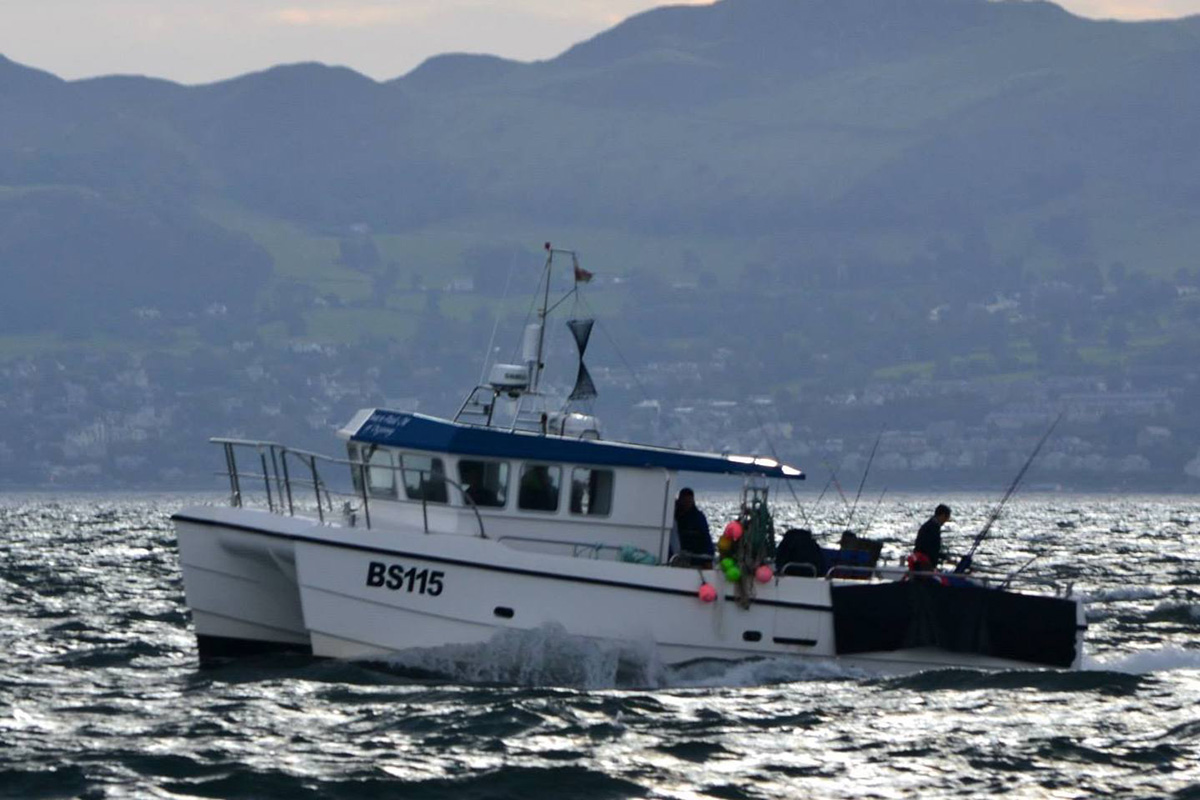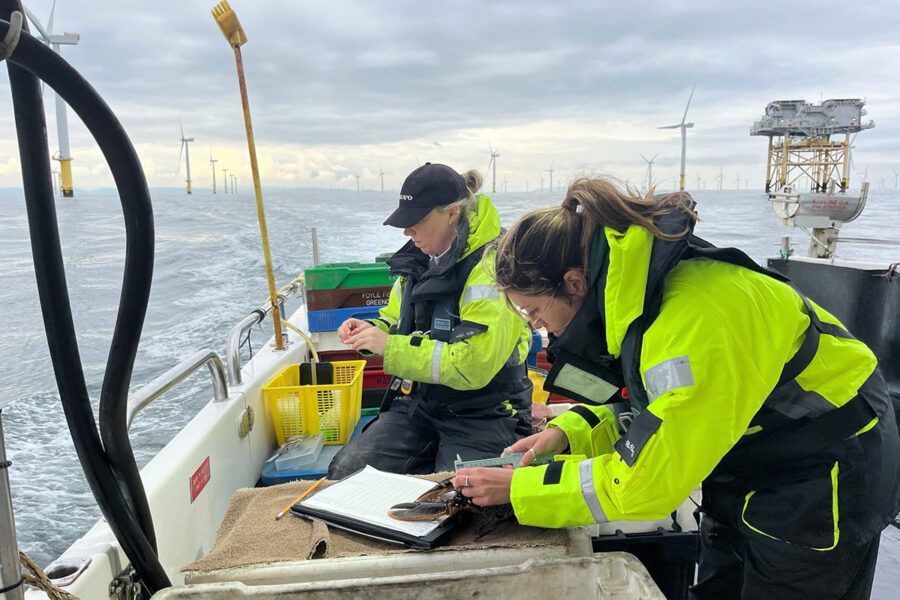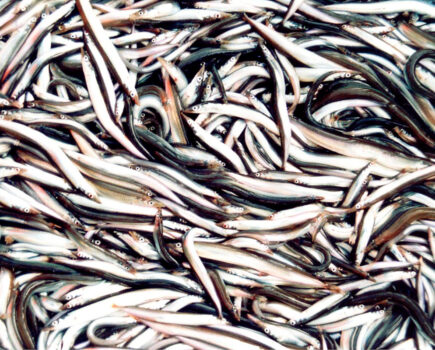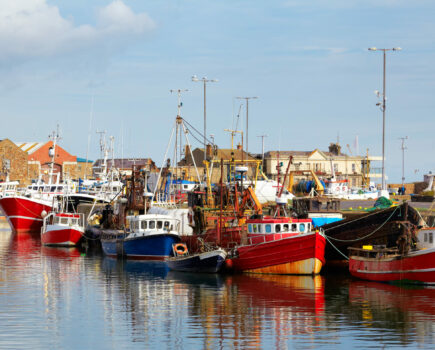A project by two universities studying lobster populations on a Welsh wind farm suggests that providing the right kinds of rock armour could see an increase in lobster numbers. Evidence suggests that lobster larvae may be settling directly on the site – though in the absence of capturing settling juveniles, this is difficult to prove.
The project, by researchers from the universities of Bangor and Aberystwth, has been funded by Defra’s Fisheries Industry Science Partnership (FISP).
Building on research conducted between 2020 and 2023 by Aberystwyth University and North Wales fishermen tracking localised lobster movements in offshore wind farms, the FISP project, which was launched in May last year, is focused on understanding site-wide lobster movements and generating population estimates to inform fishing practices within these areas.
In a first-of-its-kind study, over 600 lobsters have been tagged in a ‘mark-release-recapture’ project. This enables researchers to investigate lobster movements across the offshore wind farm, providing insights into their preferred habitats and site fidelity, and begin to estimate lobster populations within the site. The yellow tags are designed to withstand moulting, and recapture of these individuals can also provide additional data about growth rates at the site.

As well as the yellow tags themselves, which will be retained even when the lobster moults, a purple band is placed on each cutting claw to draw attention to the fact that a lobster has been tagged.
Dr Harry Thatcher from Aberystwyth University told Fishing News: “We’re really pleased with how the project is progressing. It’s been a huge effort from the guys in the field getting the tagging work done. We’re proud of the collaboration we have with the fishermen who are making this work possible.
“This is a unique study, and we’re confident that the outputs we’ll generate from this research will support fishermen impacted by offshore wind farm development.
“With artificial reef development currently taking place within other European offshore wind farms, we hope that understanding lobster behaviours and populations within these sites will provide valuable insights for potential future artificial reef initiatives in UK offshore wind farms.”
Carl Davies, who works his catamaran Gwen-Paul-M out of Conwy and is a primary partner on the project, said: “We’re using pots with small mesh (prawn creel mesh), which is retaining many of the pre-recruit lobsters, as well as adults.

Carl Davies, who fishes the Gwen-Paul-M out of Conwy, is one of the commercial fishermen involved in the project, which runs until September.
“The investigations thus far do suggest that lobsters are likely now to be recruiting onto the artificial reef – not just nomads moving in from elsewhere.
“Some of the rock armour is now nearly 10 years old, so quite possibly houses lobsters that settled there as larvae. If, during construction, developers tailored rock armour, with a suite of rock sizes, providing habitat for lobsters of varying sizes, there is surely potential to enhance lobster populations within newly constructed farms.”
This study has also provided useful insight into the use of a fishing vessel on a pro rata basis to collect data twice a week, over two six-month periods, whilst continuing its normal fishing pattern. A less expensive way of obtaining data than full-day charter, this model will become increasingly important, as data-gathering for many species will have to be ramped up for new Fisheries Management Plans. It also serves to provide a ‘minimum wage’ for crew when the fishing is not so good.
Alisdair Smith, marine and logistics manager at Gwynt y Môr offshore wind farm, said: “We have been delighted to support Harry with his research over the past four years. The opportunity to work closely with both Harry and Carl has opened the door to unprecedented co- ordination and communication between site operations and the wider fishing and research communities.
“This is a great example of what we can achieve when working together to enhance our knowledge of the potential benefits of wind farm construction and consequent habitat creation for marine crustaceans and other important species – but most importantly, what we can learn to help inform future developments”.
An overview of Harry Thatcher’s research can be found here.
The study will continue into September, when the researchers will write up their findings. Fishing News will carry a full feature on the results of the study in a future issue.

This story was taken from the latest issue of Fishing News. For more up-to-date and in-depth reports on the UK and Irish commercial fishing sector, subscribe to Fishing News here or buy the latest single issue for just £3.30 here.
Sign up to Fishing News’ FREE e-newsletter here.








